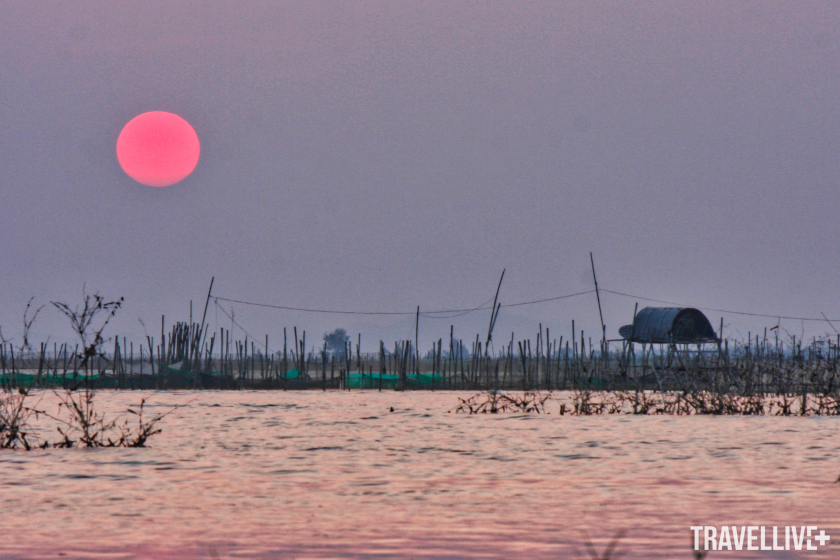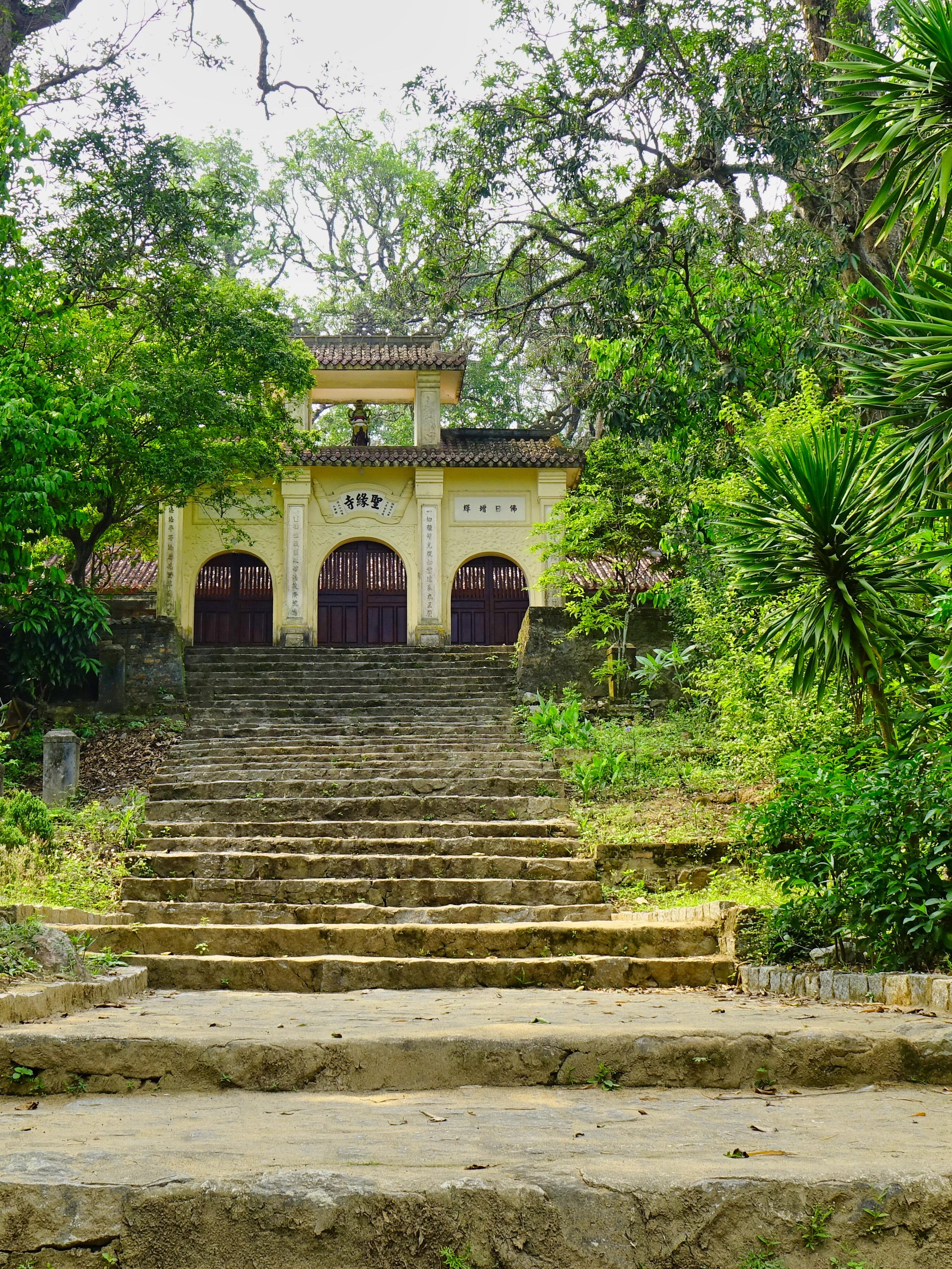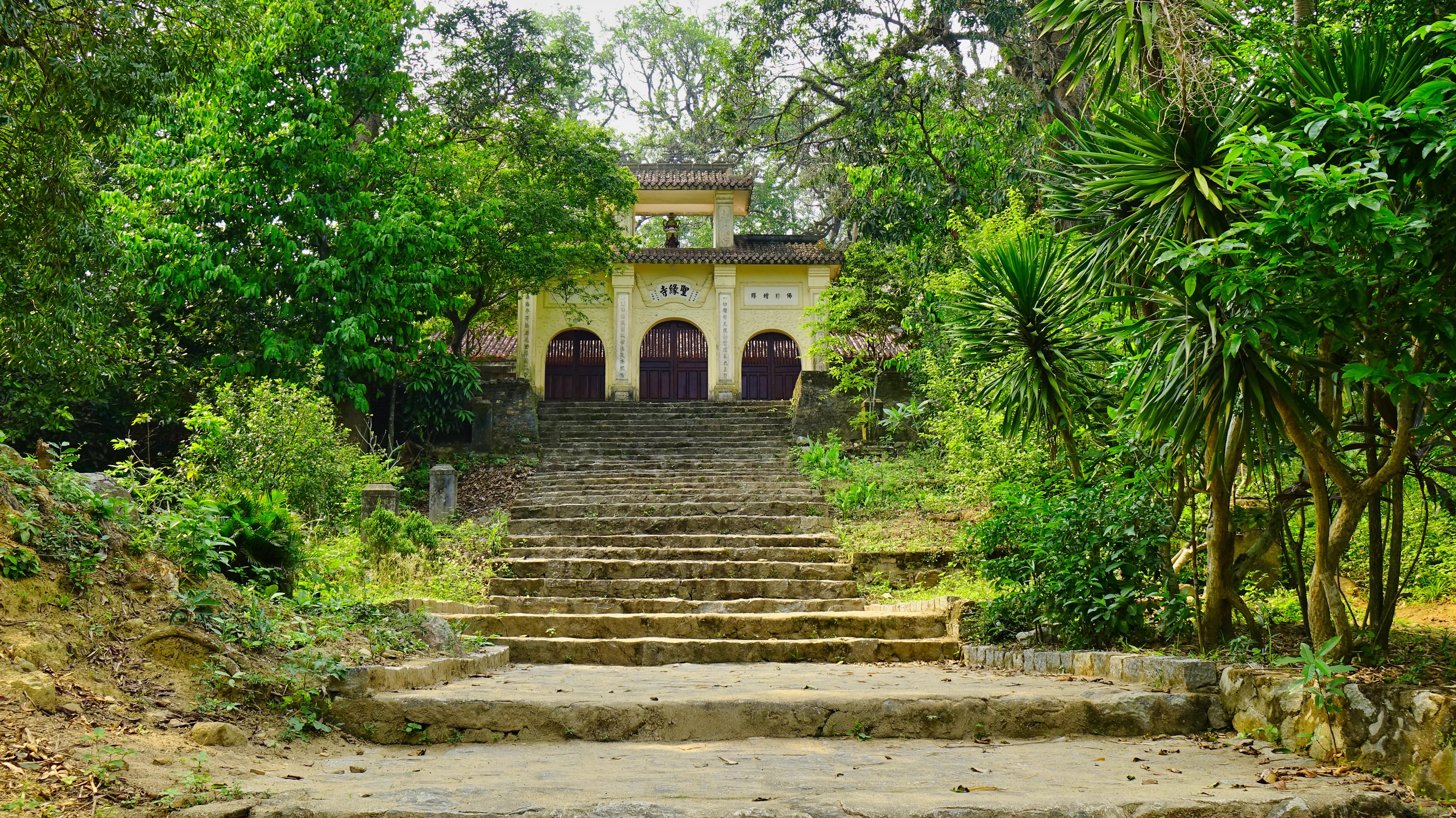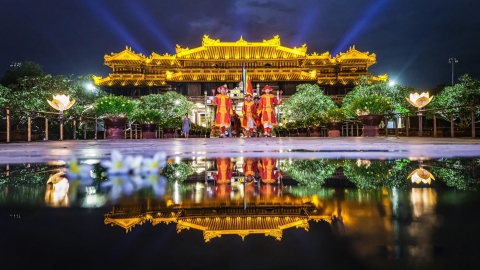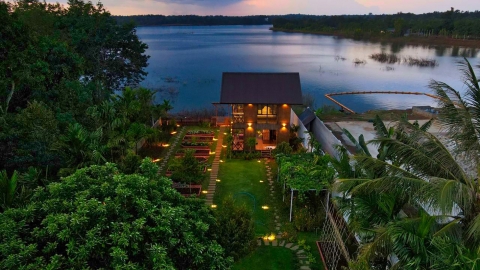Some history of the temple
In ancient times, Cau Hai lagoon was called O Long lagoon, the seaport where O Long lagoon emptied into the sea was called O Long seaport. In 1306, when Princess Huyen Tran went to Chiem to marry Che Man, she followed the sea route to O Long estuary, then entered the present-day Hue area to follow the land route over Hai Van pass to the South. From then on, O Long estuary was renamed Tu Dung (meaning:miss the beautiful girl). After more than 5 centuries with a few changes back and forth, in 1841, King Thieu Tri changed the name of this seaport to Tu Hien, and it has had that name until now.
Tu Hien estuary area has two mountains: Linh Thai mountain and Tuy Van mountain. Linh Thai mountain is larger and lies outside, Tuy Van mountain is smaller and lies inside Cau Hai lagoon.
Tuy Van Mountain was originally called My Am Son. According to legend, Lord Nguyen Phuc Tan (1620 - 1687) established a small hermitage on the mountain as a place to pray for the local people. In 1692, Lord Nguyen Phuc Chu had the hermitage renovated into a pagoda. The war and chaos at the end of the 18th century completely destroyed the pagoda.
In 1825, King Minh Mang rebuilt a new pagoda here, called Thuy Hoa Pagoda, and the mountain was also renamed Thuy Hoa Mountain. In 1836, the king renovated the pagoda, built Dai Tu Cac and Dieu Ngu Tower, and had a stone stele engraved with the content about "Thanh Duyen Pagoda" on "Thuy Hoa Mountain". The pagoda was given a new name, Thanh Duyen, and the pagoda's name and the mountain's name were separated from that time.
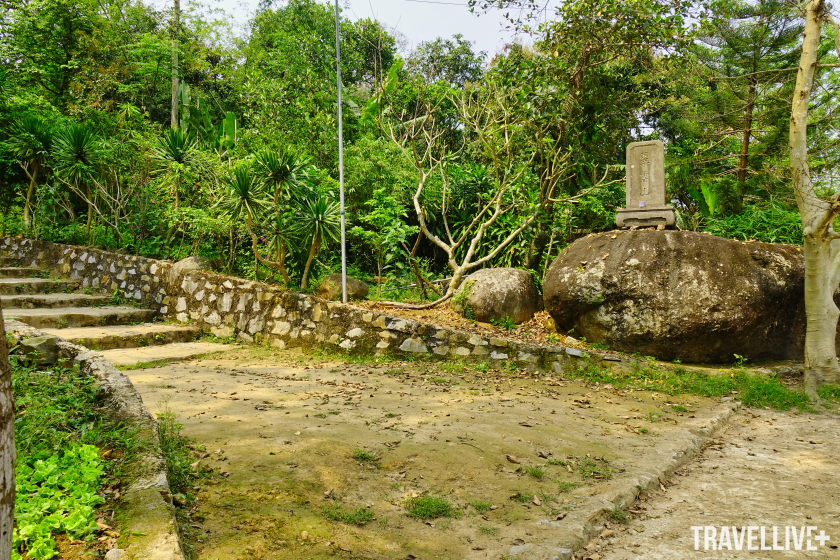
The stele with the name of the mountain is placed next to the road to the temple.
In 1841, King Thieu Tri ascended the throne. Because he did not like the taboo name of Queen Mother Ho Thi Hoa, he changed the name of Thuy Hoa mountain to Thuy Van - meaningblue mountains and clouds.Combined with the blue waves of Cau Hai lagoon, creating a beautiful natural scene, King Thieu Tri put Thuy Van mountain in the 9th position out of 20 scenic spots of the capital.
Stone tablet engraved with poemVan Son scenic spotKing Thieu Tri's stele made in 1843 is placed in the stele house at the foot of the mountain, next to the stairs leading to the pagoda. Due to lack of care, the stele houseVan Son scenic spotnow seriously degraded, weeds growing all around.

King Thieu Tri's "Van Son Thang Tich" stele house at the foot of the path leading to the pagoda
The temple with rare ancient statues
Walking up the wide steps up the mountain, when the height of the steps is not enough to make visitors feel tired, but their breathing is already a bit faster - they just pass through the main gate to enter the temple yard.
On the left corner of the temple yard is where the stele is placed.Royalof King Minh Mang solemnly under the airy small communal house roof. Right after the three-entrance gate, through the yard is the main hall of Thanh Duyen Pagoda - a large building with three compartments and two wings, with a roof in the style ofscallops and snailscharacteristic of Hue
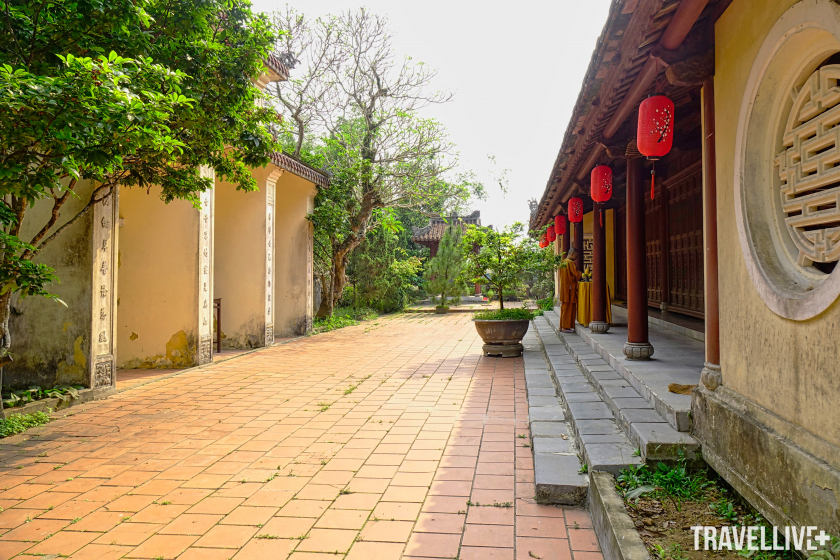
The main hall is located directly behind the main gate, a yard away.

The stele "Royal stele of Thanh Duyen pagoda worshiping at the ceremony" by King Minh Mang
The middle room of the inner shrine worships the Three Buddhas (Past, Present, Future). On both sides of the Buddha altar are two rows of altars to worship the Ten Kings of Hell and the Eighteen Arhats, with five Kings of Hell and nine bronze Arhat statues on each side.
In addition to the set of bronze statues of the Eighteen Arhats - cast by King Minh Mang in the first half of the 19th century (each statue is about 55 cm high, 35-42 cm wide, placed on a 13 cm high pedestal), the pagoda also preserves a set of 18 Arhats made of gilded bamboo, about 18 cm high, 5-6 cm wide, placed on a 4 cm high pedestal. These are ancient and precious statues, confirmed to be the oldest and largest set of Eighteen Arhats, as well as the oldest set of 18 Arhats made of gilded bamboo. Currently, the set of bronze statues of the Eighteen Arhats is displayed in the inner shrine, while the set of gilded bamboo statues is preserved by the pagoda under special conditions to preserve the precious set for a long time.
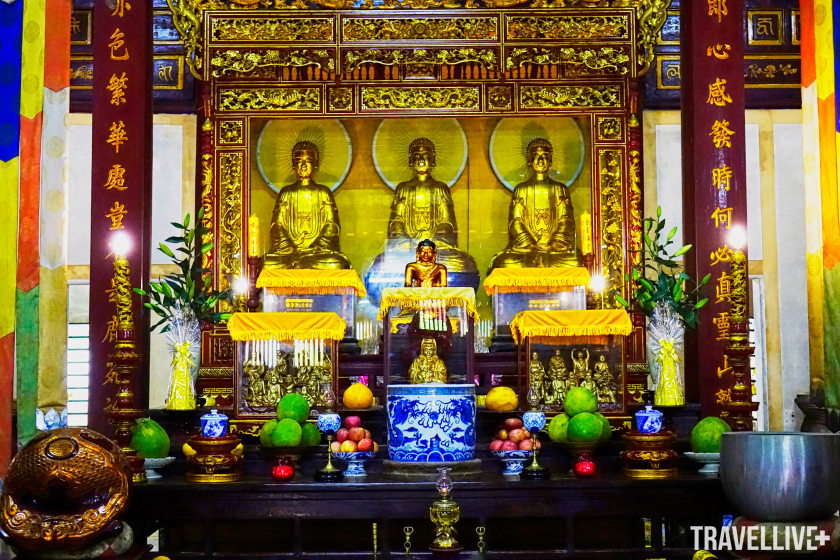
Buddhist altar in the middle of the inner temple
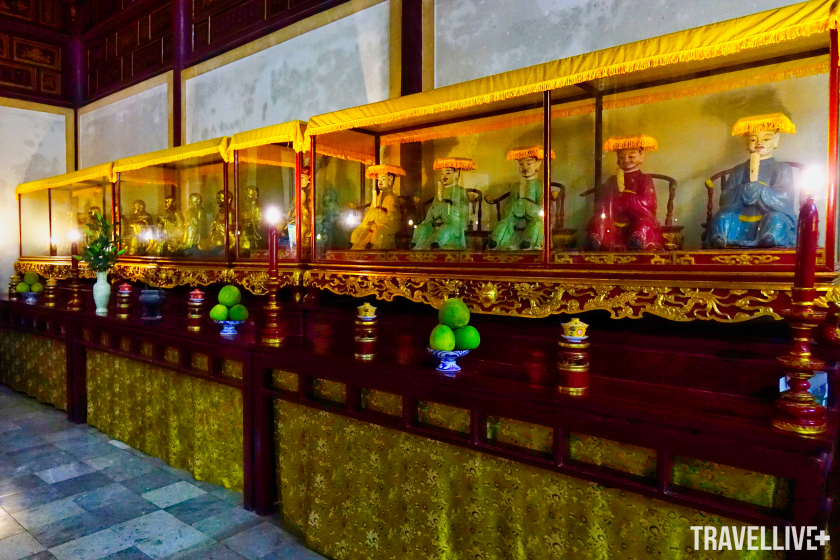
The altars of the Ten Kings of Hell and the Eighteen Arhats are on both sides of the Buddhist altar.
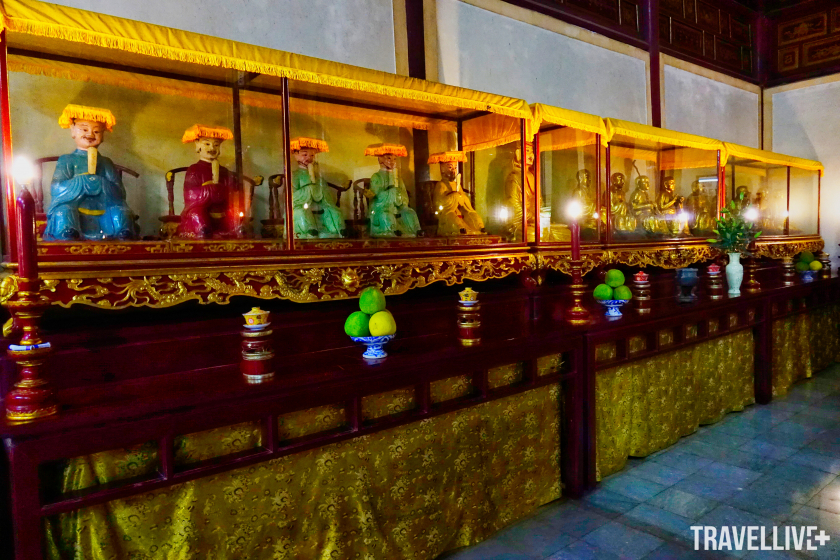
The altars of the Ten Kings of Hell and the Eighteen Arhats are on both sides of the Buddhist altar.
Leaving the main hall, through the back door of the temple, there is a series of stairs running between rows of ancient trees leading up the mountain. Looming above is the ceremonial gate of Dai Tu Cac.
Dai Tu Cac is divided into three worshiping rooms: the middle one worships Amitabha Buddha, Sakyamuni Buddha, Maitreya Buddha; the right room worships Quan Am Bodhisattva; the left room worships Dai The Chi Bodhisattva. In the later period, the temple was short of people, so Dai Tu Cac often locked its doors. Volunteers occasionally opened the gate to sweep the leaves in the old attic yard.
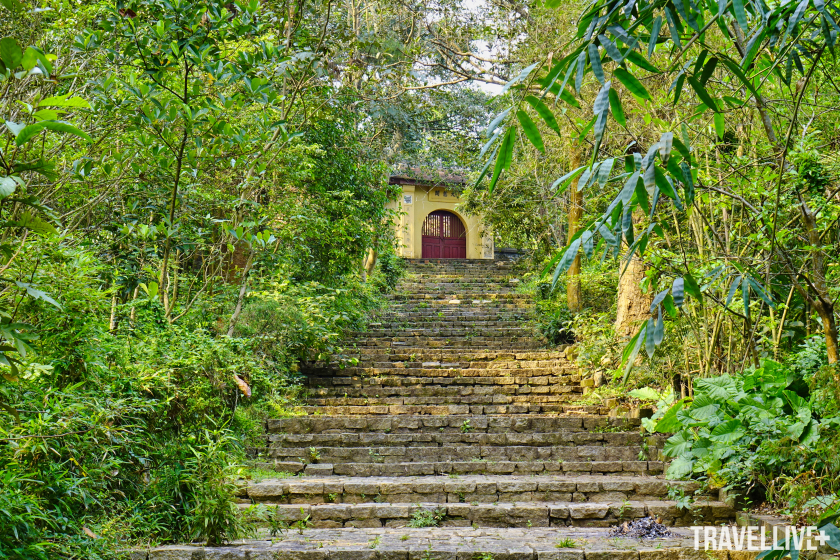
The gate of Dai Tu Cac is located halfway up the mountain.

Dai Tu Cac has been closed for a long time, dry leaves cover the yard
Continuing up the stairs, through the curve, you will see the towering shape of Dieu Ngu tower among the trees. The tower is about 12 meters high, has a square plan, and is built in three floors that gradually get smaller as they get higher.
The Buddha's name is Dieu Ngu, which also meansa place for the king to tame and control his mindKing Minh Mang also built Tien Sang temple behind Dieu Ngu tower, perhaps with the meaning that when the mind is controlled, anything can be done.

Tower of God
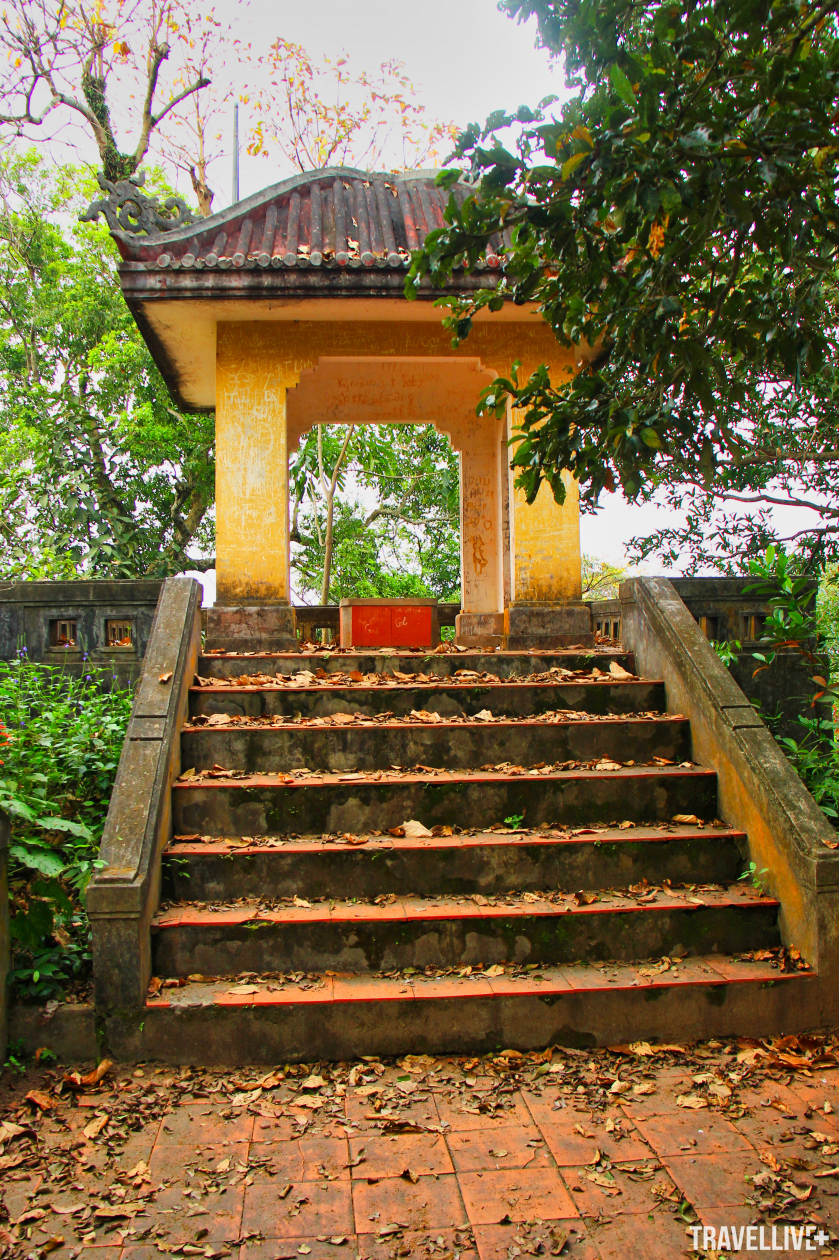
Tien Sang Temple
Wandering under the canopy of ancient trees, travelers stop at a small temple overlooking Cau Hai lagoon. Sunset on Cau Hai lagoon in early summer is so beautiful, watching the big round and rosy sun slowly fade into the thin mist on the surface of the lagoon, feeling relaxed and light in the heart, as if blending into the elegance of the space here.
Suddenly realized why, although located farthest from the Capital among the three National Temples, this place was often visited by kings, nobles, and scholars of the time.

